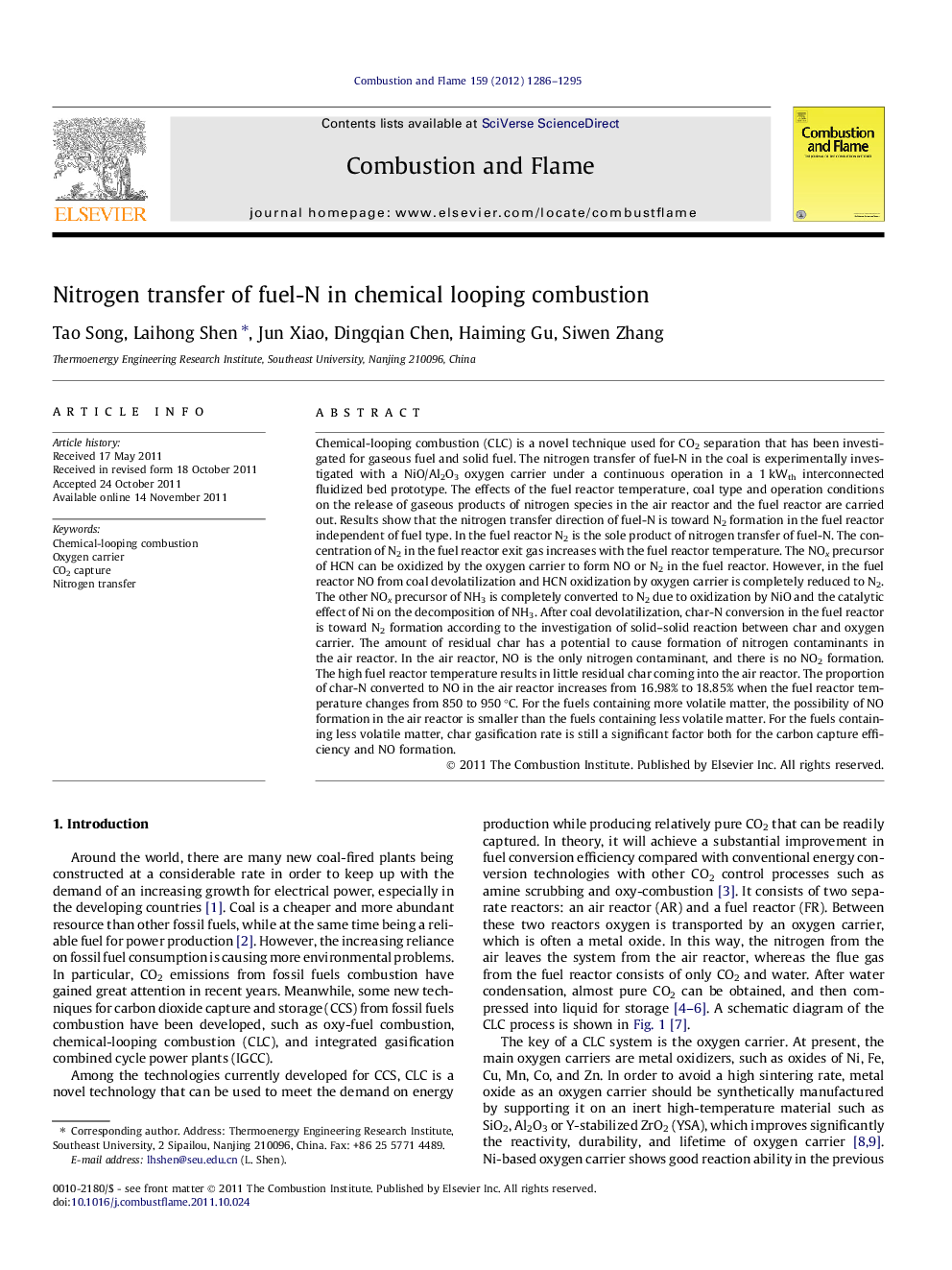| کد مقاله | کد نشریه | سال انتشار | مقاله انگلیسی | نسخه تمام متن |
|---|---|---|---|---|
| 169063 | 457973 | 2012 | 10 صفحه PDF | دانلود رایگان |

Chemical-looping combustion (CLC) is a novel technique used for CO2 separation that has been investigated for gaseous fuel and solid fuel. The nitrogen transfer of fuel-N in the coal is experimentally investigated with a NiO/Al2O3 oxygen carrier under a continuous operation in a 1 kWth interconnected fluidized bed prototype. The effects of the fuel reactor temperature, coal type and operation conditions on the release of gaseous products of nitrogen species in the air reactor and the fuel reactor are carried out. Results show that the nitrogen transfer direction of fuel-N is toward N2 formation in the fuel reactor independent of fuel type. In the fuel reactor N2 is the sole product of nitrogen transfer of fuel-N. The concentration of N2 in the fuel reactor exit gas increases with the fuel reactor temperature. The NOx precursor of HCN can be oxidized by the oxygen carrier to form NO or N2 in the fuel reactor. However, in the fuel reactor NO from coal devolatilization and HCN oxidization by oxygen carrier is completely reduced to N2. The other NOx precursor of NH3 is completely converted to N2 due to oxidization by NiO and the catalytic effect of Ni on the decomposition of NH3. After coal devolatilization, char-N conversion in the fuel reactor is toward N2 formation according to the investigation of solid–solid reaction between char and oxygen carrier. The amount of residual char has a potential to cause formation of nitrogen contaminants in the air reactor. In the air reactor, NO is the only nitrogen contaminant, and there is no NO2 formation. The high fuel reactor temperature results in little residual char coming into the air reactor. The proportion of char-N converted to NO in the air reactor increases from 16.98% to 18.85% when the fuel reactor temperature changes from 850 to 950 °C. For the fuels containing more volatile matter, the possibility of NO formation in the air reactor is smaller than the fuels containing less volatile matter. For the fuels containing less volatile matter, char gasification rate is still a significant factor both for the carbon capture efficiency and NO formation.
Journal: Combustion and Flame - Volume 159, Issue 3, March 2012, Pages 1286–1295